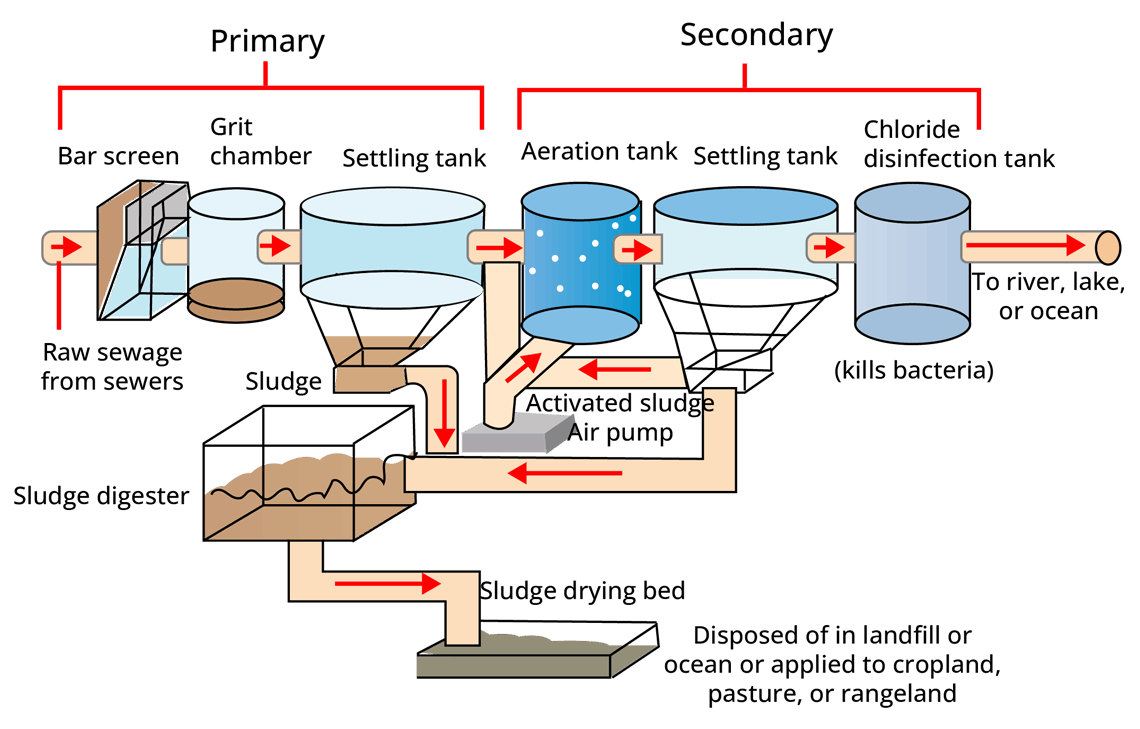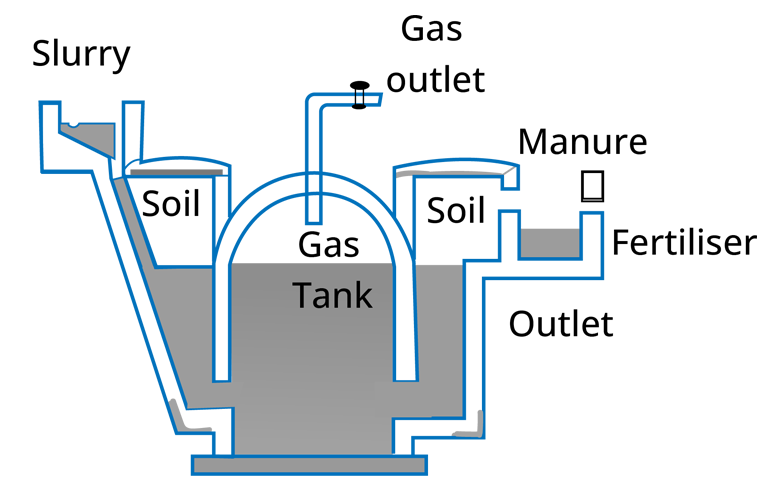




Microbes in Human Welfare
This particular article contains the chapter named microbes in human welfare as per the requirement of the students wishing to crack the NEET exam. It will be beneficial for the students who are looking for last minute revision.
This file contains all of the important concepts and also provides the insight of the exam pattern. By going thoroughly to this document the students can find out the answers to the important questions associated with the chapter such as what are microbes,what are the different kind of microbes that are helpful or beneficial for us, what is the role of microbes in household products, what are the microbes which can be used as biofertilizers etc.
Important Topics of Microbes in Human Welfare
Microbes in Household Products
Microbes in Industrial Products
Microbes in Sewage Treatment
Microbes in Production of Biogas
Microbes as Biocontrol Agents
Microbes as Biofertilisers
Important Concepts
Microbes
These are the minute unicellular organisms that are invisible to the naked eye. They are present everywhere such as in soil, water, air, inside our bodies etc. They are also known as microorganisms.
They are diverse and include viruses, bacteria, protozoa, fungi, viroids, prions etc. Although in the majority of cases they are pathogenic in nature and cause a variety of infections, they have an important role to play in human welfare.
Microbes in Household Products
Microbes in Industrial Products
1. Fermented Beverages
Saccharomyces cerevisiae which is commonly known as Brewer’s yeast has been used for a long period of time for the production of alcoholic beverages from the cereals and fruit juices. Examples of fermented beverages include wine, beer, whisky, brandy or rum etc.
2. Antibiotics
Such types of medicines that are used to destroy bacteria. Penicillin was the first antibiotic that was produced from the fungus Penicillium notatum by Alexander Fleming. During world war II this antibiotic was extensively used to treat American soldiers.
The following table describes the different types of antibiotics and the diseases against which they can be used.
3. Vaccines
These are defined as an artificial way to activate the immune system to protect against infections. It was Edward Jenner who first developed the vaccine against smallpox. Now a variety of vaccines have been developed against various infections such as Polio, DPT, Measles, Covid-19 etc.
4. Enzymes and chemicals
Enzymes are biological catalysts. Nowadays, a variety of enzymes have been produced by using no. of microorganisms such as Streptococcus bacteria produces an enzyme called streptokinase, which is modified genetically and used as a clot-buster for removing clots from the blood vessels.
Different Kinds of Organic Acids and Their Sources
Bioactive molecules are those chemicals which are produced in small amounts in plants and certain foods and apart from the nutritional qualities they also produce varieties of physiological effects such as
1. Cyclosporin A is a suppressor of the immune system which is commonly used in organ
transplant patients and is produced by Trichoderma polysporum.
2. Statins that are commonly used to lower the blood cholesterol level are produced by
Monascus purpureus.
Microbes in Sewage Treatment
The municipal wastewater is called sewage. A major component of this wastewater is the human excreta, and it also contains certain microbes that can be pathogenic. So, it can’t be discharged into the natural body such as rivers, lakes etc. without the treatment.
The sewage treatment is completed in two stages that are primary treatment and secondary treatment.
Filtration of solid particles (known as suspended solids) and sedimentation are done during the primary treatment.
Break-down of organic matter is done during the secondary treatment by using the biological microorganisms

Microbes in Production of Biogas
Biogas is the biofuel that is produced by the decomposition of organic matter.
It is a mixture of methane, hydrogen, and carbon dioxide.
The biogas plant is composed of a dome shaped structure where biogas is produced under anaerobic (in the absence of oxygen) conditions.
Methanogens are the methane producing archaebacteria which belong to the Kingdom Monera. The example includes Methanobacterium.
They are mainly found in cattle dung and in anaerobic sludge during sewage treatment. They grow in an anaerobic manner on cellulosic material and produce a large amount of methane which is the main constituent of biogas, along with CO2 and H2.

Microbes as Biocontrol Agents
Biocontrol is defined as the process which involves the use of biological methods for controlling plant diseases and pests.
Some examples of biocontrol agents are
Dragonflies and ladybugs
Bacillus thuringiensis
Baculoviruses
Trichoderma
Microbes Used as Biofertilizers
These are defined as biological products which contain living microorganisms. They enhance the nutrient quality of the soil. The microorganisms such as fungi, bacteria and cyanobacteria are the main sources of biofertilizers. Example includes
Rhizobium
Azotobacter and Azospirillum
Mycorrhiza
Cyanobacteria such as Nostoc, Anabaena, Oscillatoria etc.
Solved Examples from the Chapter
1. Milk starts to coagulate when Lactic Acid Bacteria (LAB) is added to milk as a starter. Mention two benefits that LAB provides.
Ans: The benefits that are provided by LAB are
1. It checks the growth of disease-causing microbes.
2. It converts milk into curd and also increases the overall nutritional quality by increasing vitamin B12.
Key point to remember - Lactic acid bacteria converts the milk into the curd.
2. What is cyclosporin A? What is its importance?
Ans: Cyclosporin A is an eleven-membered cyclic oligopeptide produced by Trichoderma Polysporum through fermentative activity.
Importance- It has antifungal, anti-inflammatory, and immunosuppressive properties. It prevents the rejection reactions in organ transplantation by inhibiting the activation of T-cells.
Key point to remember - Cyclosporin A is produced by Trichoderma Polysporum.
3. What is sewage? In which way can this be harmful?
Ans: The municipal wastewater is called sewage. It contains human excreta and certain microbes. In general, it consists of 95.5% water and 0.1 to 0.5% organic and inorganic matter.
It can be harmful to us due to the presence of a variety of microorganisms in them, most of which are highly pathogenic.
The BOD (biochemical oxygen demand ) of sewage water is high which develops anaerobic conditions in water and results in the death of aquatic fauna and emits a foul smell due to incomplete oxidation of organic materials in the sewage.
Key point to remember - Sewage waste contains a large number of pathogenic bacteria and the biochemical oxygen demand is also high.
Solved Problems of Previous Year Question from the Chapter
1. High value of BOD indicates that ___
A. Water is less polluted
B. Water is pure
C. Water is highly polluted
D. Consumption of organic matter in water is higher
Ans: The correct answer is “C”.
BOD stands for biochemical oxygen demand, which is defined as the amount of oxygen
required by the microorganisms while performing the function of decomposition of
organic matter in the water. The greater the pollutant concentration, the greater will be
the value of BOD.
2. Secondary sewage treatment is mainly a ______
A. Chemical process
B. Biological process
C. Physical process
D. Mechanical process
Ans: The correct answer is “B”.
During secondary sewage treatment, the organic matter is mainly decomposed by the
microorganisms which grow in the form of flocs (which are defined as the bacteria
associated with fungal filaments and form the mesh like structures).
3. Thiobacillus is a group of bacteria helpful in carrying out
Nitrogen fixation
Chemoautotrophic fixation
Nitrification
Denitrification
Ans: The correct answer is “D”.
Thiobacillus is a chemoautotrophic bacteria that denitrify the nitrate during the oxidation of compounds. The process of denitrification involves the conversion of oxides nitrogen to free nitrogen.
Practice Questions
1. Give the full form of Bt. Name the insects killed by it.
Ans: Bt. stands for Bacillus thuringiensis. It kills a wide range of insects such as moths, beetles, mosquitoes, aphids, and termites.
2. Name the blank spaces a, b, c, and d from the table given below:
Ans:
3. Match the column I with column II
Ans:
Conclusion
This particular document contains all the necessary information that can be beneficial for the students who are preparing for the NEET exam and can be really helpful for an effective and quick revision. It carries all the important concepts, questions from the past year NEET exam, mock test & also the Biology NCERT. One must make sure to try the Practice questions by themselves to test your knowledge and to get desired results.
NEET Important Chapter- Microbes in Human Welfare

 Share
ShareFAQs on NEET Important Chapter- Microbes in Human Welfare
1. Is the chapter ‘Microbes in Human Welfare’ important for NEET 2026?
Yes, it is important for the NEET exam because it covers most of the important topics and concepts that fetch high weightage in the exam.
2. Is NCERT enough for preparing for the NEET 2026 exam?
Yes, it is enough. One can score very well by going through it again and again because every time a person receives new information which is very important in terms of exams.
3. What are the important topics of the chapter ‘Microbes in Human Welfare’?
It is not a lengthy chapter and is important for NEET aspirants, hence the students should go through all the concepts in the chapter.




















 Watch Video
Watch Video


